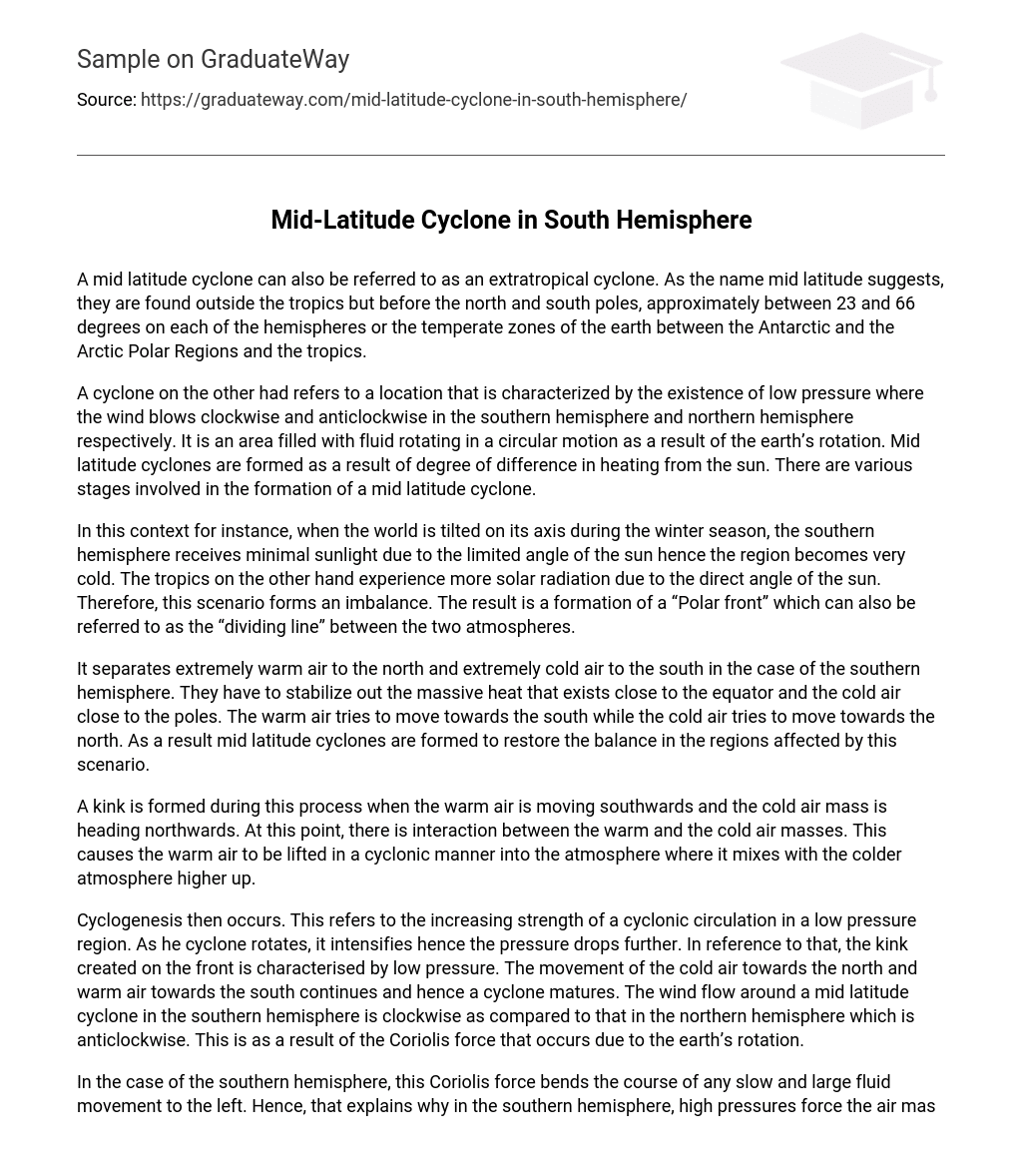A mid latitude cyclone can also be referred to as an extratropical cyclone. As the name mid latitude suggests, they are found outside the tropics but before the north and south poles, approximately between 23 and 66 degrees on each of the hemispheres or the temperate zones of the earth between the Antarctic and the Arctic Polar Regions and the tropics.
A cyclone on the other had refers to a location that is characterized by the existence of low pressure where the wind blows clockwise and anticlockwise in the southern hemisphere and northern hemisphere respectively. It is an area filled with fluid rotating in a circular motion as a result of the earth’s rotation. Mid latitude cyclones are formed as a result of degree of difference in heating from the sun. There are various stages involved in the formation of a mid latitude cyclone.
In this context for instance, when the world is tilted on its axis during the winter season, the southern hemisphere receives minimal sunlight due to the limited angle of the sun hence the region becomes very cold. The tropics on the other hand experience more solar radiation due to the direct angle of the sun. Therefore, this scenario forms an imbalance. The result is a formation of a “Polar front” which can also be referred to as the “dividing line” between the two atmospheres.
It separates extremely warm air to the north and extremely cold air to the south in the case of the southern hemisphere. They have to stabilize out the massive heat that exists close to the equator and the cold air close to the poles. The warm air tries to move towards the south while the cold air tries to move towards the north. As a result mid latitude cyclones are formed to restore the balance in the regions affected by this scenario.
A kink is formed during this process when the warm air is moving southwards and the cold air mass is heading northwards. At this point, there is interaction between the warm and the cold air masses. This causes the warm air to be lifted in a cyclonic manner into the atmosphere where it mixes with the colder atmosphere higher up.
Cyclogenesis then occurs. This refers to the increasing strength of a cyclonic circulation in a low pressure region. As he cyclone rotates, it intensifies hence the pressure drops further. In reference to that, the kink created on the front is characterised by low pressure. The movement of the cold air towards the north and warm air towards the south continues and hence a cyclone matures. The wind flow around a mid latitude cyclone in the southern hemisphere is clockwise as compared to that in the northern hemisphere which is anticlockwise. This is as a result of the Coriolis force that occurs due to the earth’s rotation.
In the case of the southern hemisphere, this Coriolis force bends the course of any slow and large fluid movement to the left. Hence, that explains why in the southern hemisphere, high pressures force the air mass to spin counter-clockwise, following a left-turn movement. Mid latitude cyclones in the southern hemisphere also tend occur more frequently than the ones in the northern hemisphere and are more oriented over the southern ocean.





